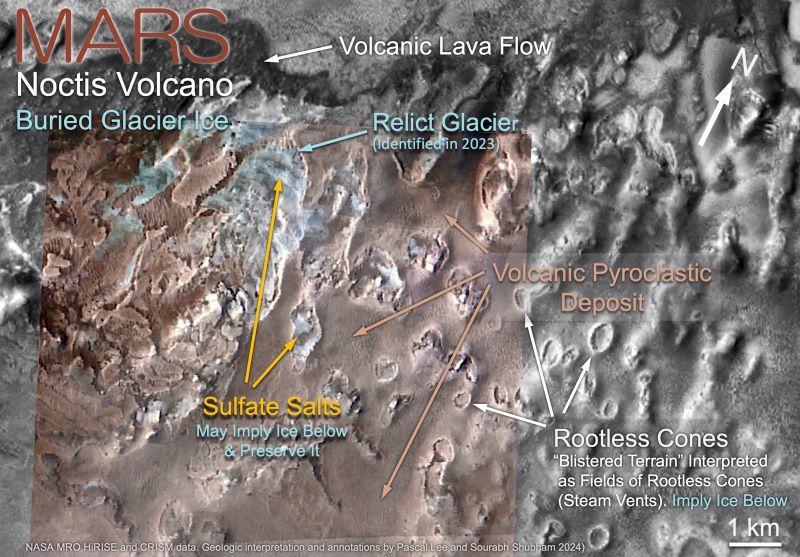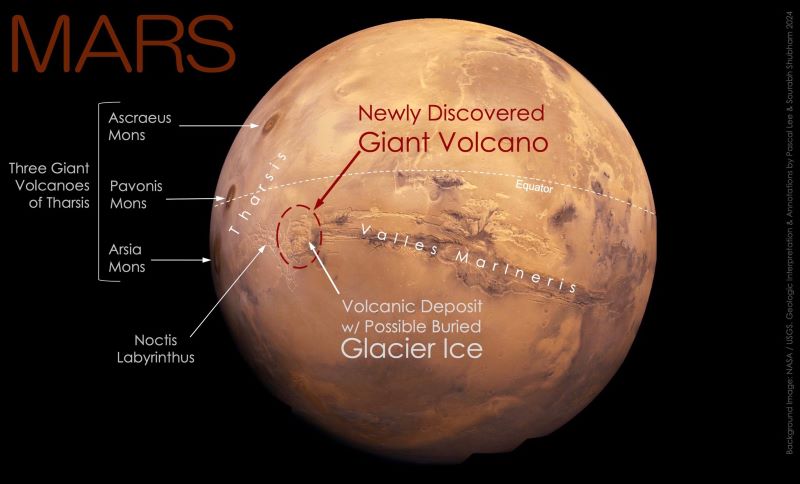
Give back to astronomy with a donation to EarthSky.org! Your gift will support educational resources that teach people of all ages about space exploration and the fascinating facts about our universe.
Giant volcano on Mars hiding in plain sight
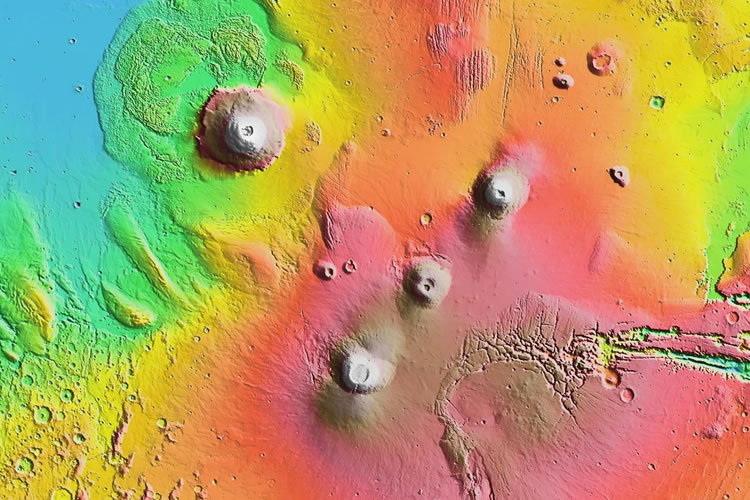
At the 55th Lunar and Planetary Science Conference held in The Woodlands, Texas, scientists revealed the discovery of a giant volcano and a possible sheet of buried glacial ice. The discovery is from the eastern part of Mars’ Tharsis volcanic province, near the planet’s equator. Mars-orbiting spacecraft have imaged this region repeatedly since Mariner 9 in 1971. But the region is deeply eroded beyond easy recognition, so the giant volcano had been hiding in plain sight for decades.

The newly found volcano lies in one of Mars’ most iconic regions. It’s at the boundary between the heavily fractured maze-like Noctis Labyrinthus (Labyrinth of the Night) and the monumental canyons of Valles Marineris (Valleys of Mariner).
Giant volcano on Mars named Noctis volcano
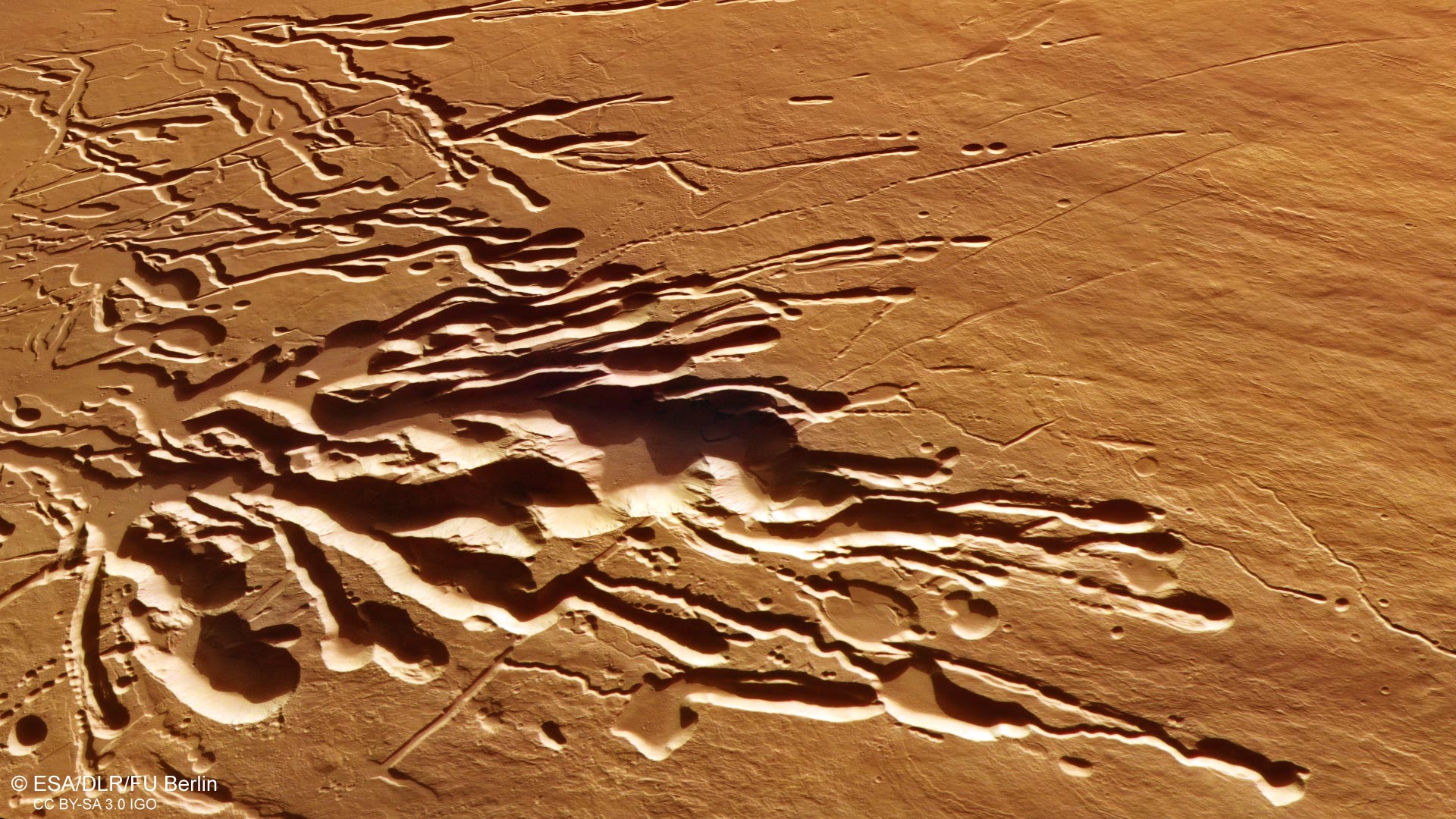
Temporarily designated Noctis volcano pending an official name, the structure’s center is at 7° 35′ S, 93° 55′ W. It reaches 9,022 meters (29,600 feet) in elevation and spans 450 kilometers (280 miles) in width. The volcano’s gigantic size and complex modification history indicate it’s been active for a very long time. Its southeastern sections have a thin, recent volcanic deposit beneath which glacial ice is likely still present. This combined giant volcano and possible glacial ice discovery is significant. It points to an exciting new location to study Mars’ geologic evolution through time, search for life and explore with robots and humans in the future.
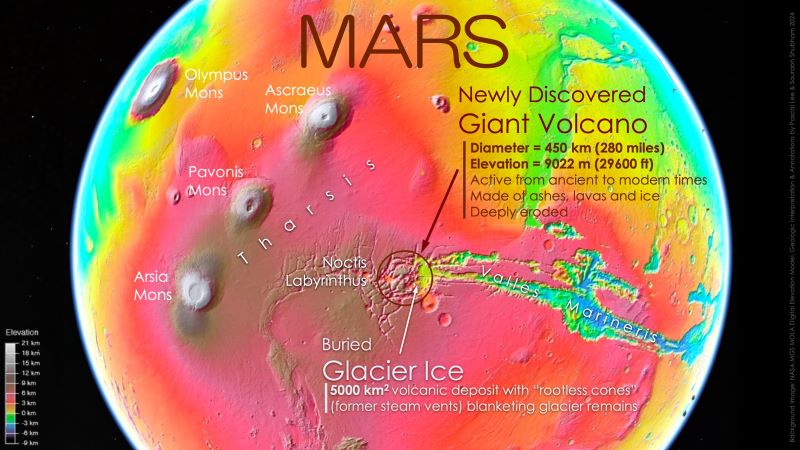
Discovery of the giant volcano on Mars
Pascal Lee, a planetary scientist with the SETI Institute and the Mars Institute based at NASA Ames Research Center, was the lead author of the study. Lee said:
We were examining the geology of an area where we had found the remains of a glacier last year when we realized we were inside a huge and deeply eroded volcano.

Several clues give away the volcanic nature of the jumbled, layered mesas and canyons in this part of Noctis Labyrinthus. The central summit area has several elevated mesas forming an arc. These areas reach a regional high and slope downhill away from the summit area. The gentle outer slopes extend out to 225 kilometers (140 miles) away in different directions. A caldera remnant – the remains of a collapsed volcanic crater – is near the center of the structure. Lava flows, pyroclastic deposits (made of volcanic particulate materials such as ash, cinders, pumice and tephra) and hydrated mineral deposits occur in several areas within the structure’s perimeter.

A smoking gun
Sourabh Shubham, a graduate student at the University of Maryland’s Department of Geology and the study’s co-author, explained:
This area of Mars is known to have a wide variety of hydrated minerals spanning a long stretch of Martian history. A volcanic setting for these minerals had long been suspected. So, it may not be too surprising to find a volcano here. In some sense, this large volcano is a long-sought ‘smoking gun’.
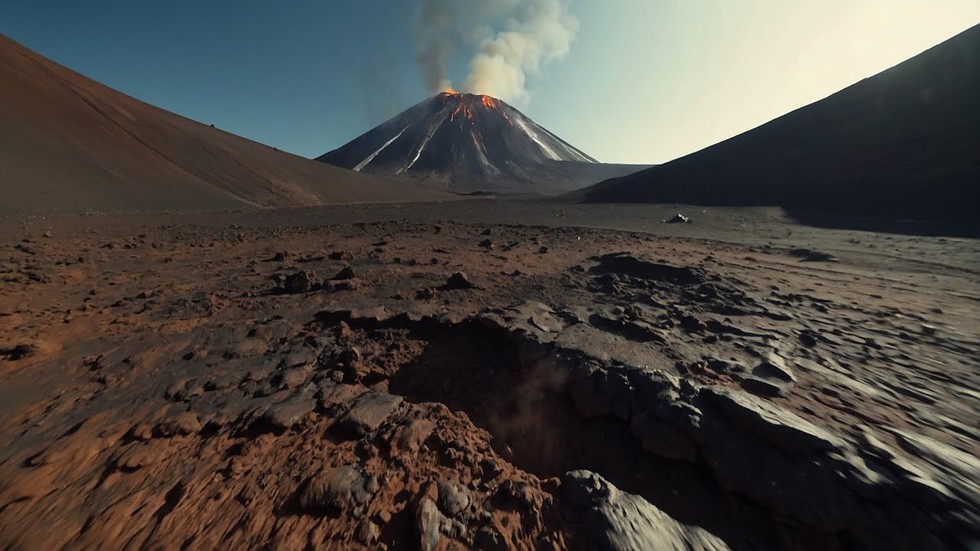
The study also reports the discovery of a large, 5,000-square-kilometer (1,930-sq-mi) area of volcanic deposits. The deposits within the volcano’s perimeter consist of many low, rounded and elongated, blister-like mounds. Scientists interpret this “blistered terrain” as a field of “rootless cones,” mounds produced by explosive steam venting or swelling. This venting happens when a thin blanket of hot volcanic materials comes to rest on top of a water or ice-rich surface.
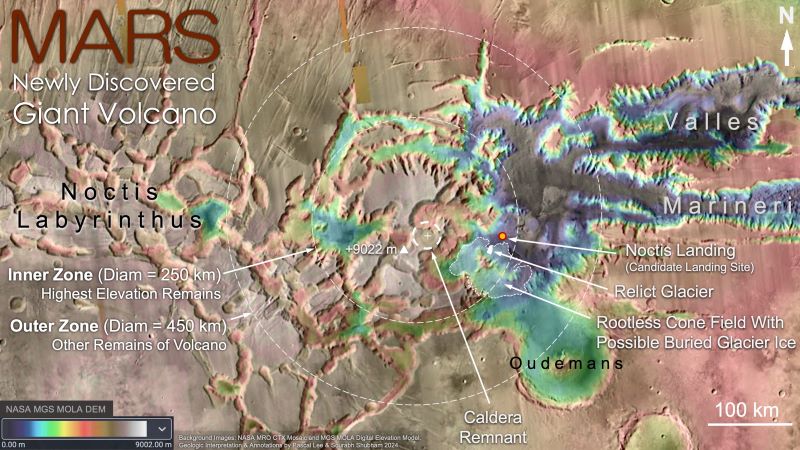
Remains of a glacier
Just a year ago, Lee, Shubham and their colleague John W. Schutt had identified the spectacular remains of a glacier. They did so through a sizeable erosional opening in the same volcanic blanket. The researchers saw a light-toned deposit of sulfate salt with the morphologic traits of a glacier. They interpreted the sulfate deposit – made mainly of jarosite (a hydrous sulfate) – formed when the blanket of volcanic pyroclastic materials came to rest on a glacier and reacted chemically with the ice. Breached rootless cones identified in the current study show similar occurrences of polyhydrated sulfates. This further suggests the blistered volcanic blanket may be hiding a vast sheet of glacial ice underneath it.
